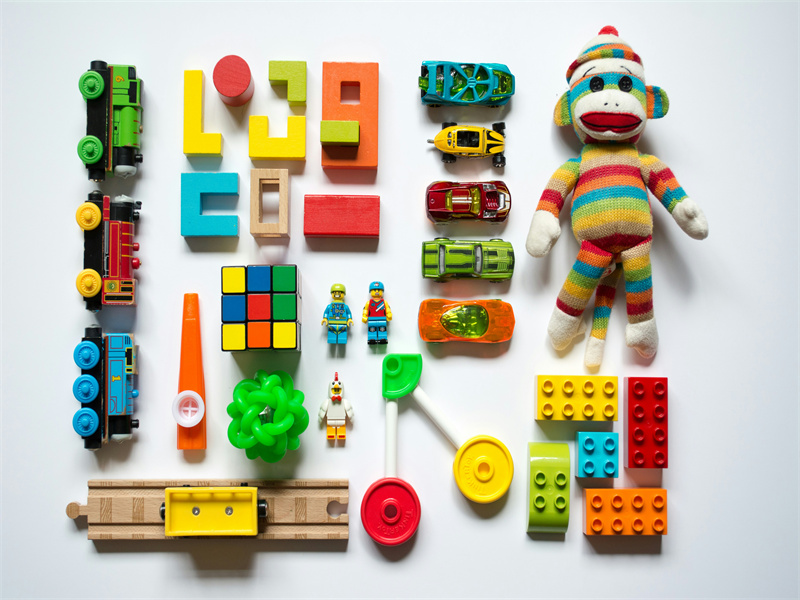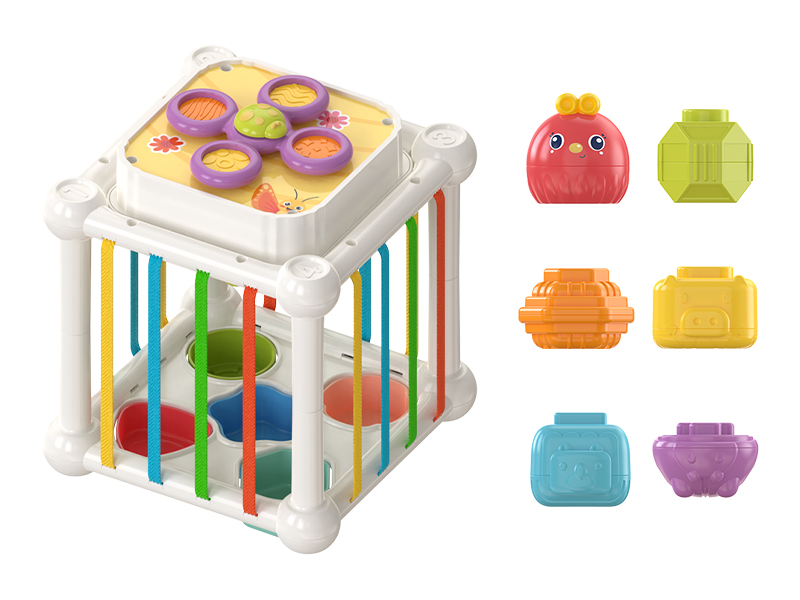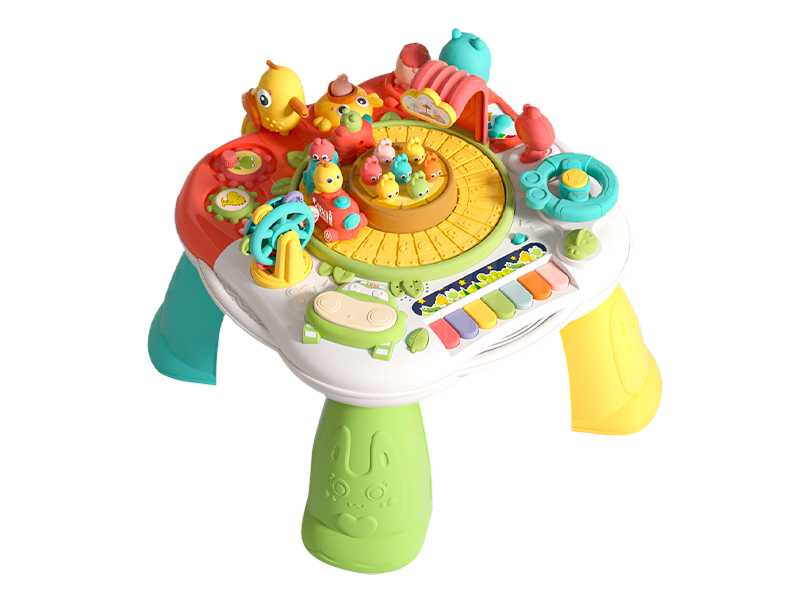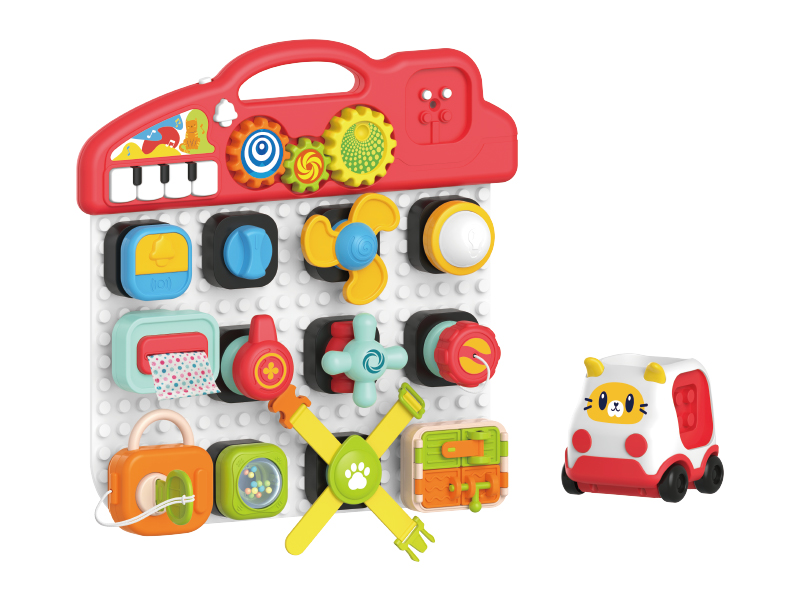English
What Are the Best Baby Toys for Development? A Guide to Choosing the Right Toys
As a parent, you're likely always on the lookout for the best toys that will not only entertain your baby but also help them grow and develop. Baby toys play a crucial role in fostering physical, cognitive, and emotional development during the early stages of life. But how do you know which toys will best support your baby's development? Let's dive into the key types of toys and how they can contribute to your baby's growth.
Why Do Baby Toys Matter for Development?
You might wonder: why are toys so important for my baby's development? The answer lies in the fact that play is an essential activity for learning and growth. During the first few years, a baby's brain is rapidly developing, and toys help stimulate their senses, motor skills, and cognitive abilities. More importantly, babies are learning not just through watching but also through interaction — and toys are the perfect tools for this.
Cognitive Growth:
Play helps babies understand the world around them. Simple toys like shape sorters or stacking rings encourage babies to explore patterns, shapes, and spatial relationships. These toys help foster early cognitive skills like logic and problem-solving. For example, a baby might figure out that a small ring goes on the bottom and a larger one on top. This teaches them about size, order, and the concept of cause and effect.
Motor Skills Development:
Motor skills are the foundation of physical coordination. The act of grabbing, holding, and manipulating objects helps babies develop fine motor skills. Meanwhile, toys that encourage movement — like push toys or activity centers — promote gross motor skills, such as crawling, standing, and walking. This dual approach is essential as it lays the groundwork for later physical activities like writing or playing sports.
Sensory Stimulation:
Babies experience the world through their senses. Sensory toys that offer different textures, sounds, or colors help babies better process sensory information. For example, rattles or toys with different fabric textures not only engage their sense of touch but also their auditory and visual senses. Sensory play encourages brain development by helping babies respond to their environment and stimuli.
Toys are vital in stimulating these essential areas of growth, making them more than just a source of entertainment. By understanding why toys matter, parents can make informed choices that enhance their baby's development.

How Do Baby Toys Support Different Types of Development?
Baby toys aren't just about playtime; they contribute directly to various developmental milestones. Let's break down the different types of toys and how they support specific areas of growth in your baby.
1. Cognitive Development Toys: Helping Your Baby Learn and Think
Cognitive development involves the growth of your baby's brain as they begin to understand the world and problem-solve. The right toys stimulate curiosity, encourage exploration, and promote learning.
Shape Sorters & Stacking Toys: Simple toys like shape sorters and stacking rings are perfect for encouraging babies to think critically. These toys help babies recognize shapes, colors, and sizes while understanding concepts like order and classification. A baby playing with a shape sorter is not just having fun; they are learning about patterns, logic, and even hand-eye coordination.
Building Blocks: Building toys, such as blocks, are a classic developmental tool. As babies stack, arrange, and knock down blocks, they engage in spatial reasoning and learn about balance and cause and effect. These toys are also great for nurturing creativity and imagination. By assembling different shapes, babies can explore endless possibilities.
Interactive Learning Toys: Toys that respond to your baby's actions (through sounds, lights, or motion) introduce the concept of cause and effect. A toy that makes a sound when pressed teaches babies that their actions lead to a reaction. This is crucial for brain development, as it helps babies develop an understanding of the relationship between their actions and the world around them.
Interactive toys often come in the form of musical instruments, books with sounds, or toys that light up when touched, offering a multisensory experience that stimulates cognitive growth.
For instance, the Montessori Sensory Activity Toddler Toy is a great example of an interactive toy designed to stimulate cognitive growth while providing sensory engagement. Its various textures and colors make it both educational and fun, offering your baby opportunities to problem-solve and explore.

2. Sensory Development Toys: Engaging Your Baby's Senses
Sensory development is the process by which babies learn to interpret information through their senses: sight, sound, touch, taste, and smell. Sensory toys help babies explore their environment and process these sensory inputs.
Textured Toys: Babies love to touch and feel different textures. Soft plush toys, sensory balls, and fabric books with varying textures give babies the opportunity to develop their sense of touch. Rattles and toys with various textures allow babies to explore tactile sensations that are crucial for brain development.
Musical Toys: Babies are naturally drawn to sounds, and musical toys — like rattles, xylophones, or baby-safe pianos — can help with auditory development. These toys teach babies about rhythm, sounds, and cause and effect. Babies also enjoy toys that produce different melodies, helping them recognize patterns and build listening skills.
Visual Stimulation Toys: Toys with bright colors, flashing lights, or patterns are fantastic for visual development. Babies are especially attracted to high-contrast images and bright colors, which help stimulate their vision. Light-up toys, for example, not only entertain babies but also encourage them to visually track movements, improving focus and coordination.
By offering a variety of sensory toys, you can help your baby refine their sensory skills, which are essential for processing and understanding the world around them.
3. Motor Skills Development Toys: Encouraging Movement and Coordination
Motor skills are foundational to physical development. Both fine motor skills (small, precise movements) and gross motor skills (larger body movements) need to be nurtured during the first few years.
Fine Motor Skills Toys: Rattles, sensory balls, and simple grasping toys help develop fine motor skills. Babies begin to learn how to manipulate small objects with their fingers, a precursor to later skills like writing, drawing, and even playing musical instruments.
Push and Pull Toys: As babies learn to crawl and walk, push-and-pull toys become invaluable. Push toys, like a baby stroller or walker, support babies as they strengthen their legs and practice walking. These toys also help develop coordination between their arms and legs, preparing them for more complex movements like running or climbing.
Activity Centers and Play Mats: Activity centers that encourage standing, reaching, and pressing buttons are perfect for helping babies strengthen their muscles. These toys also encourage hand-eye coordination as babies learn to manipulate objects. Play mats with hanging toys and textures offer the perfect environment for babies to practice reaching and grasping, strengthening their fine motor skills.
The Multifunctional Activity Table for Kids with Piano is an example of a toy that promotes both fine and gross motor skills. With various activities like piano keys and buttons, babies can explore a range of movements, stimulating their coordination and muscle development.

The right motor skills toys encourage babies to move, explore, and engage in activities that enhance their physical abilities, setting the stage for more advanced physical activities later in life.
4. Emotional and Social Development Toys: Building Connections and Empathy
As babies grow, they begin to understand emotions and social interactions. Toys that encourage social play help babies learn empathy, cooperation, and how to manage emotions.
Role-Playing Toys: Dolls, stuffed animals, and toy kitchens allow babies to engage in imaginative play. By mimicking everyday activities like cooking or taking care of a doll, babies learn social roles, practice empathy, and begin to understand other people's feelings.
Interactive Dolls and Plush Toys: Dolls that respond to touch or voice help babies connect emotionally. These toys can introduce concepts like comfort and caring, as babies learn to “care” for their dolls. By feeding or comforting a doll, a baby is learning the basics of empathy.
Toys That Encourage Sharing: Simple toys like stacking blocks, puzzles, or games that involve turn-taking teach babies about sharing and cooperation. As babies begin to play with others, they learn about patience, taking turns, and the joy of social interaction.
By selecting toys that promote social and emotional development, you help your baby build essential life skills such as empathy, cooperation, and conflict resolution.
For example, the Busy Board Baby Montessori Toys offer opportunities for babies to engage in social interactions while playing with a variety of interactive elements, fostering both cognitive and social skills.

Selecting the Right Toys for Your Baby
Choosing the right toys for your baby is one of the most important decisions you'll make as a parent. Toys are much more than a way to keep your child entertained — they are tools for learning and development. By selecting toys that promote cognitive growth, sensory exploration, motor skills, and emotional development, you are setting your baby up for a lifetime of curiosity, learning, and emotional resilience.
When picking toys, always consider your baby's current stage of development and choose those that challenge them just the right amount — not too easy, but not too advanced. A good toy will keep them engaged while helping them grow. With the right selection, your baby's toys will be more than just objects; they'll be building blocks for a bright future.
Playtime is a wonderful opportunity to bond with your baby and create lasting memories, all while contributing to their growth. So, whether you're looking for toys that help with early learning or simply something fun for your baby to enjoy, choosing the right toys is an investment in their future.